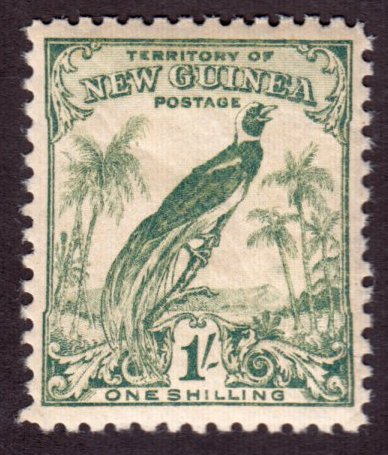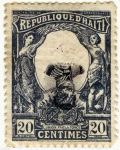
Discussion - Member to Member Sales - Research Center

Discussion - Member to Member Sales - Research Center

I have never come across these before and would appreciate any information as to what they might be.
The stamps are hinged to a thin card as shown and have no gum. The watermarks seem to be the first 2 types and are not all the same but this is a bit difficult to check without removing them from the card.

Best regards,
Bob

Login to Like
this post
Royal Mail experimented with black graphite lines on the back of some stamps in that issue during the late 1950s.
The ones with the lines on the back are listed by Scott (minor numbers).
Your stamps are not those. I am thinking that they are pre-cancels, test stamps, or canceled stamps used to train postal clerks.

Login to Like
this post

01:30:18pm
Bob,
Good thing you are in Canada. If you were in the UK you'd be a wanted fugitive by now! 

1 Member
likes this post.
Login to Like.
Thanks people,
Information is much appreciated. I found these in a box lot that I got in South Africa years ago. I will take care not to send them to Britain.
Regards,
Bob

Login to Like
this post
nevermind
nothing to see here


Login to Like
this post
Might have very good value to specialists. I certainly would not remove them from the card.

Login to Like
this post

08:44:05pm
That might be tricky.
Usually they are available at a minable charge. To have some specialist value it would most likely be necessary to know which watermark and its orientation.
Wildings have three watermarks and they can be upright, inverted, as well as sideways left or sideways right. The presence of phosphor bands on the front can be checked against slanted light, but to check for the unlikely presence of graphite lines on the obverse would again require examining the back.
I do not recall the experimental graphite lines being used at postal training facilities, but it seems possible once the cancellation and letter facing experiment failed.
There is even the possibility of the watermark design being installed on the dandy roll backwards or erroneously after a minor repair.
This is why, at first in 1967, some people thought the Machins would be boring.

Login to Like
this post
Duh, guess I should read more carefully. I overlooked the being hinged part.

Login to Like
this post

08:51:33pm
I didn't notice hat either, but it is a lot more convenient.

Login to Like
this post
These stamps are being offered on E-Bay over here a lot and do not fetch very high prices unless someone has a fairly extensive collection.

Login to Like
this post
If the stamps on the card in the original post are ungummed then they have been previously soaked as PO Training School Bars were overprinted on regular issues in the main (Some misprints, discarded stock, damaged left-overs were also used).
Most types were overprinted including some sideways watermark issues.
Sets of 17 values of QEII Definitives can be found for around £10.
High values were also overprinted including the early Seahorses (from 1920), also Some commemoratives up to 1970 and Back-of-Book items. Many of these command much higher prices.
Different types of roller bars include vertical 1,2 or 3 bars with different spacings and also with horizontal bars.
A collectors paradise and this site may help.
http://www.philatelicsannex.org/reference/oldbook.pdf

Login to Like
this post
I'm not a Wildings collector, but no matter - this is fascinating.....
....this is the kind of info I love about this site!
Thanks everyone, for your expertise and willingness to chime in and educate!



Randy

Login to Like
this post
Hi Guys,
Thanks for all the additional comments and information. The card was just a plain piece of thin stock and a dealer likely mounted them to better display for sale. Good hinges were used so no problem removing them.
Thanks again,
Bob

Login to Like
this post
I am interested in their actual use. I suspect that they were issued to counter clerks in the training schools to assist them in the reconciliation of stock with cash at the end of the "day".Obviously one couldn't use "negotiable instruments" such as genuine stamps. I wonder whether similar postal orders,reply coupons and postal stationery and even vehicle excise licences were used to simulate the full gamut of transactions in the post office.
Malcoolm

Login to Like
this post

Hi All,
I have never come across these before and would appreciate any information as to what they might be.
The stamps are hinged to a thin card as shown and have no gum. The watermarks seem to be the first 2 types and are not all the same but this is a bit difficult to check without removing them from the card.

Best regards,
Bob

Login to Like
this post

re: G B Wildings with black lines printed on the FACE ?
Royal Mail experimented with black graphite lines on the back of some stamps in that issue during the late 1950s.
The ones with the lines on the back are listed by Scott (minor numbers).
Your stamps are not those. I am thinking that they are pre-cancels, test stamps, or canceled stamps used to train postal clerks.

Login to Like
this post
They who would give up essential Liberty, to purchase a little temporary Safety, deserve neither Liberty nor Safety. -Benjamin Franklin
28 Aug 2015
01:30:18pm
re: G B Wildings with black lines printed on the FACE ?
Bob,
Good thing you are in Canada. If you were in the UK you'd be a wanted fugitive by now! 

1 Member
likes this post.
Login to Like.

re: G B Wildings with black lines printed on the FACE ?
Thanks people,
Information is much appreciated. I found these in a box lot that I got in South Africa years ago. I will take care not to send them to Britain.
Regards,
Bob

Login to Like
this post

re: G B Wildings with black lines printed on the FACE ?
nevermind
nothing to see here


Login to Like
this post

re: G B Wildings with black lines printed on the FACE ?
Might have very good value to specialists. I certainly would not remove them from the card.

Login to Like
this post
Silence in the face of adversity is the father of complicity and collusion, the first cousins of conspiracy..
28 Aug 2015
08:44:05pm
re: G B Wildings with black lines printed on the FACE ?
That might be tricky.
Usually they are available at a minable charge. To have some specialist value it would most likely be necessary to know which watermark and its orientation.
Wildings have three watermarks and they can be upright, inverted, as well as sideways left or sideways right. The presence of phosphor bands on the front can be checked against slanted light, but to check for the unlikely presence of graphite lines on the obverse would again require examining the back.
I do not recall the experimental graphite lines being used at postal training facilities, but it seems possible once the cancellation and letter facing experiment failed.
There is even the possibility of the watermark design being installed on the dandy roll backwards or erroneously after a minor repair.
This is why, at first in 1967, some people thought the Machins would be boring.

Login to Like
this post

re: G B Wildings with black lines printed on the FACE ?
Duh, guess I should read more carefully. I overlooked the being hinged part.

Login to Like
this post
Silence in the face of adversity is the father of complicity and collusion, the first cousins of conspiracy..
28 Aug 2015
08:51:33pm
re: G B Wildings with black lines printed on the FACE ?
I didn't notice hat either, but it is a lot more convenient.

Login to Like
this post

re: G B Wildings with black lines printed on the FACE ?
These stamps are being offered on E-Bay over here a lot and do not fetch very high prices unless someone has a fairly extensive collection.

Login to Like
this post

re: G B Wildings with black lines printed on the FACE ?
If the stamps on the card in the original post are ungummed then they have been previously soaked as PO Training School Bars were overprinted on regular issues in the main (Some misprints, discarded stock, damaged left-overs were also used).
Most types were overprinted including some sideways watermark issues.
Sets of 17 values of QEII Definitives can be found for around £10.
High values were also overprinted including the early Seahorses (from 1920), also Some commemoratives up to 1970 and Back-of-Book items. Many of these command much higher prices.
Different types of roller bars include vertical 1,2 or 3 bars with different spacings and also with horizontal bars.
A collectors paradise and this site may help.
http://www.philatelicsannex.org/reference/oldbook.pdf

Login to Like
this post

re: G B Wildings with black lines printed on the FACE ?
I'm not a Wildings collector, but no matter - this is fascinating.....
....this is the kind of info I love about this site!
Thanks everyone, for your expertise and willingness to chime in and educate!



Randy

Login to Like
this post

re: G B Wildings with black lines printed on the FACE ?
Hi Guys,
Thanks for all the additional comments and information. The card was just a plain piece of thin stock and a dealer likely mounted them to better display for sale. Good hinges were used so no problem removing them.
Thanks again,
Bob

Login to Like
this post
06:35:32am
re: G B Wildings with black lines printed on the FACE ?
I am interested in their actual use. I suspect that they were issued to counter clerks in the training schools to assist them in the reconciliation of stock with cash at the end of the "day".Obviously one couldn't use "negotiable instruments" such as genuine stamps. I wonder whether similar postal orders,reply coupons and postal stationery and even vehicle excise licences were used to simulate the full gamut of transactions in the post office.
Malcoolm

Login to Like
this post

